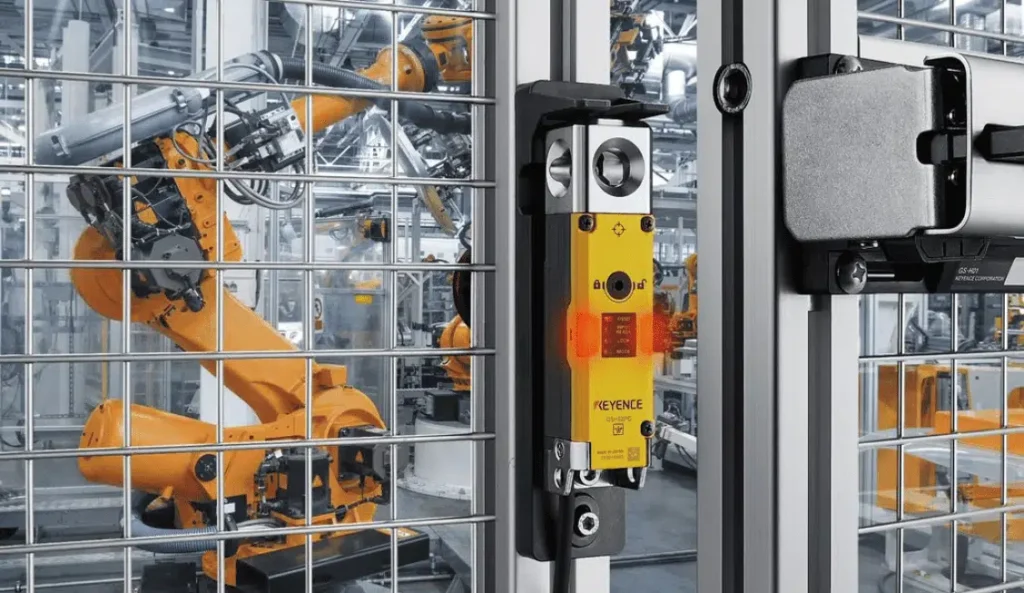Safety Interlock Switch for the Machine Tool Industry
- Home
- Applications
- Door Safety Interlocking
Enquire Now
Let us help you

Safety Interlock Switch for the Machine Tool Industry
Our sales team has decades of experience in the field finding solutions for our customers’ applications.
- sales@rendertechindia.com
- +91-8698009335
Safety Interlock Switch for the Machine Tool Industry
A safety interlock switch is an essential safety device used in the machine tool industry to ensure that machinery operates only under safe conditions. These switches are designed to prevent machinery from starting or continuing operation unless certain safety parameters are met, such as ensuring that doors, covers, or other safety barriers are securely in place. This helps protect workers from potential hazards like moving parts, electrical components, and high temperatures associated with machine tool operations.
Applications of Safety Interlock Switches in the Machine Tool Industry
- CNC Machines: Safety interlock switches are commonly used in Computer Numerical Control (CNC) machines to ensure that operators are not exposed to hazardous moving parts while the machine is in operation. The switch prevents the machine from starting unless the access doors are closed or locked, reducing the risk of injury.
- Milling Machines: Milling machines, which are used to shape materials, often involve rotating parts and cutting tools. Safety interlock switches ensure that these machines can’t operate when safety guards or covers are open, preventing workers from coming into contact with dangerous components while the machine is running.
- Lathes: Lathes, which are used to shape materials by rotating them, require safety interlocks to stop operation if the safety covers or enclosures are open. These switches help prevent operators from coming into contact with moving parts, such as the spindle or rotating tools, minimizing the risk of injury.
- Grinders and Polishers: Machines used for grinding and polishing require safety measures to protect workers from high-speed rotating wheels. Safety interlock switches ensure that these machines only operate when all safety doors and covers are securely in place, preventing accidents during operation.
- Injection Molding Machines: In injection molding, safety interlocks are used to prevent the machine from cycling if the mold chamber door is not properly closed. This helps avoid exposure to high pressures and ensures the safe operation of the molding process.
- Robotic Arms in Manufacturing: In environments where robotic arms are used in machine tool processes, safety interlock switches ensure that these automated systems only operate when it is safe for human workers to be near. These switches prevent movement if safety barriers are removed or if there is a breach in the safety zone.
- Press Machines: In hydraulic or mechanical press machines, safety interlocks prevent the machine from cycling if the safety guards or access doors are open. These interlocks protect operators from being injured by the press during the forming or stamping process.
Key Benefits of Safety Interlock Switches in the Machine Tool Industry
- Improved Worker Safety: The primary benefit of safety interlock switches is worker protection. By ensuring that machinery cannot operate unless safety barriers or doors are in place, these switches minimize the risk of workers coming into contact with dangerous moving parts or hot surfaces, reducing the likelihood of injuries.
- Prevention of Unauthorized Access: Safety interlock switches ensure that machines cannot be operated by unauthorized personnel or under unsafe conditions. This helps protect workers who are not trained or authorized to use the machinery and ensures that safety protocols are followed.
- Compliance with Industry Regulations: The machine tool industry is subject to stringent safety standards, such as OSHA regulations. Safety interlock switches ensure that machines are operated safely and in compliance with these regulations, reducing the risk of legal liabilities or fines for non-compliance.
- Protection of Equipment: Safety interlock switches prevent machinery from running when the safety guards or covers are open, reducing the likelihood of equipment damage. This not only protects workers but also helps maintain the longevity and reliability of expensive machinery.
- Reduced Downtime: By preventing accidents and mechanical malfunctions, safety interlocks help minimize downtime. Machines that operate only under safe conditions are less likely to be damaged by misuse or malfunction, ensuring smoother operations and less time spent on repairs.
- Increased Operational Efficiency: With safety interlock switches in place, workers can operate machinery with confidence, knowing that it is safe to do so. This helps maintain a steady workflow and increases productivity by ensuring that machines operate only when everything is in order.
- Reduced Risk of Contamination: In industries that require precise manufacturing, such as aerospace or medical device production, safety interlock switches can help maintain clean environments by ensuring that machines operate safely without exposing parts to contaminants or environmental hazards.
- Prevention of Malfunctions: Safety interlocks help prevent machine malfunctions by stopping the machinery if there is a problem, such as an open door or an improperly installed guard. This early detection of issues can prevent more severe problems and costly repairs down the line.
- Cost Savings: By preventing injuries, reducing the risk of damage to machines, and ensuring compliance with regulations, safety interlock switches help reduce costs associated with accidents, legal issues, repairs, and downtime. Over time, this results in significant cost savings for companies.
Benefits of Interlock Switches
Safety interlock switches are vital for maintaining safe and efficient operations in the machine tool industry. These devices help protect workers from potential hazards, ensure that machines operate under safe conditions, and comply with safety regulations. The key benefits of using safety interlock switches include enhanced worker safety, prevention of unauthorized machine use, protection of expensive equipment, reduced downtime, and compliance with regulatory standards. By preventing accidents and malfunctions, safety interlock switches contribute to the overall efficiency, reliability, and profitability of manufacturing operations.

